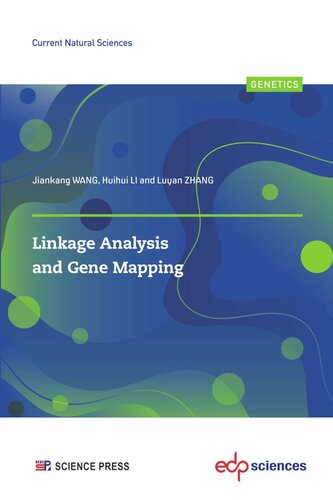

Most ebook files are in PDF format, so you can easily read them using various software such as Foxit Reader or directly on the Google Chrome browser.
Some ebook files are released by publishers in other formats such as .awz, .mobi, .epub, .fb2, etc. You may need to install specific software to read these formats on mobile/PC, such as Calibre.
Please read the tutorial at this link: https://ebookbell.com/faq
We offer FREE conversion to the popular formats you request; however, this may take some time. Therefore, right after payment, please email us, and we will try to provide the service as quickly as possible.
For some exceptional file formats or broken links (if any), please refrain from opening any disputes. Instead, email us first, and we will try to assist within a maximum of 6 hours.
EbookBell Team

4.4
12 reviewsOne major task of genetic studies is to construct the genetic map through linkage analysis, and then locate the genetic loci of important traits on the constructed linkage maps, identify favorable alleles which are of values to human beings, and investigate their biochemical pathways from genotype to phenotype.
This book presents the linkage analysis and gene mapping methodologies, which are applicable to self-pollinated, cross-pollinated, and asexual propagated species, and genetic populations derived from two homozygous parents, two heterozygous parents, and multiple homozygous parents. Chapter 1 in this book begins with genetic mating designs and various types of genetic populations, followed by the structure of commonly used populations and analysis methods of phenotypic data. In chapters 2 and 3, estimation of recombination frequency and construction of linkage map are introduced for twenty bi-parental populations. Chapter 4 deals with two classical gene mapping methods, where no background control is considered, while chapters 5 and 6 describe the inclusive composite interval mapping (ICIM) with background control. Chapter 7 is focused on populations derived from two heterozygous parents, which can be two individuals in a random mating population, two clonal cultivars, or two single crosses from four homozygous inbred lines. Chapter 8 provides knowledge on the pure-line progeny populations derived from four to eight homozygous parents. The last two chapters covers populations, methods and commonly asked questions in genetic mapping which cannot be included previously.
This book is intended for readers working on plant and animal genetics, population and quantitative genetics, and plant and animal breeding.